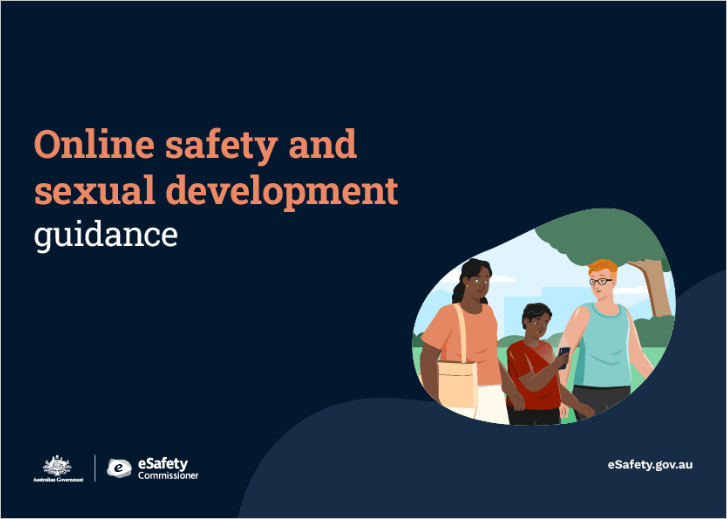Online safety and sexual development guidance
This guidance is designed to help people who advise and support families to understand how the online experiences of children and young people can impact, and be impacted by, their relationships and sexual development.
The guidance is presented as a 'continuum.' This means it describes how children gradually grow, from birth to 18 years. Unlike other resources, it explores sexual literacy and respectful relationships in relation to online safety.
On this page:
How the continuum can help
Today’s children grow up in a digitally-enabled world. They use online devices and platforms to learn, play and connect with friends and family. As children grow, the things they see and do online affect them. However, it can sometimes be hard for families and people who support them to keep track of what children are likely to be exposed to, and how that may change. For example, algorithms can keep them endlessly scrolling, quietly shaping what they see, believe and even who they think they should be – especially if the content is violent, racist or sexist.
The depth and complexity of children’s online experiences can seem overwhelming for parents and carers, as well as the people who advise and support them. This continuum gives practical context to the evidence about children’s growth and how they can be supported.
The structure of the continuum
For ease of navigation, the continuum is segmented into five age groups and four domains.
The age groups will help with guiding parents and carers on age-appropriate conversations and activities with children.
The four domains cover a range of areas relevant to children’s experiences growing up online:
- Culture, social norms and sexuality includes a focus on human rights, as well as gender norms and gender-based violence.
- Bodies, consent and privacy includes puberty, body image, and how privacy and consent apply in online spaces.
- Relationships includes norms, peer influences, communication and respect in family, friendships and romantic relationships.
- Sexual literacy includes sexual health and education, media portrayals of sex and relationships and online pornography.
When exploring the continuum, it’s best to think about the developmental phase of the child you are supporting, remembering that each child’s needs vary so developmental stages may not always directly correlate with age.
Download the continuum
The continuum is primarily for professionals in organisations, services and practices to use as a reference resource to support parents, carers and children. However, parents and carers might also find the document useful when seeking support in specific areas of children’s sexual development and online safety. For more tailored parenting advice, we encourage parents and carers to visit the Parents section of the eSafety website.
The continuum is not intended to be read cover-to-cover, but to be drawn upon as needed.
Social media changes
As of 10 December 2025, many social media platforms are not allowed to let Australians under 16 have an account.
What you need to know:
- As of 10 December 2025, Facebook, Instagram, Kick, Reddit, Snapchat, Threads, TikTok, Twitch, X and YouTube are required to take reasonable steps to prevent Australians under 16 from having accounts on their platforms. See the latest list.
- Under-16s are still allowed to see publicly available social media content that doesn’t require logging into an account.
- Most standalone gaming and messaging apps, as well as many services that support health and education, are not affected by the new law.
- There are no penalties for under-16s who access an account on an age-restricted social media platform, or for their parents or carers. This is about making the platforms take greater responsibility for the safety of children – they face penalties of up to $49.5 million if they don’t take reasonable steps to implement the changes.
For more, visit eSafety’s frequently asked questions.
Join a free information webinar about the new laws.
Share these resources with parents or use them in your organisation, service or practice to talk about the changes and answer children and young people's questions about online safety.
Explore eSafety resources for young people
- FAQs for young people – answers to common questions
- Get-ready guide for under 16s, with a personal action plan to fill out
- I need help – something has happened online
Last updated: 10/12/2025
